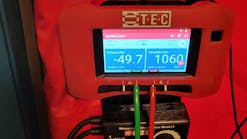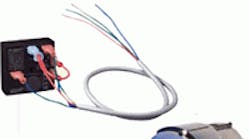The arid regions of the U.S. tend to benefit the most from the energy savings of LER technology. Source: nationalatlas.gov
Can you reduce your customer's air conditioning bill by 16% in 15 minutes? If you live in a hot and dry climate, the answer is yes, through the use of latent energy recovery (LER) technology.
As energy producing resources become scarcer and more expensive, homeowners are looking for ways to lower their electric bills. Still others believe reduced energy use is beneficial to the environment.
Government and other regulatory bodies have enacted regulations to increase the efficiency of appliances and lower the energy consumptions of homes. The HVAC industry has seen governments mandating equipment with higher SEER ratings. The SEER test, however, is run on an air conditioner with a dry coil, with a return dry bulb of 80F and return wet bulb of 57F — a rare occurrence in the real world.
Having air conditioners charged correctly, with adequate airflow and clean and sealed ducts with a clean condenser coil, are all important for optimizing system efficiency. However, with minimal investment, LER technology can take air conditioning system efficiency to the next level.
Latent energy is associated with a changing state. In this case, we're talking about the latent energy of water. If you've ever gotten out of a pool on a hot, dry day, and felt a chill, you’ve experienced latent energy recovery.
An air conditioner's primary job is to remove heat from indoor air. But at some point, to continue cooling, or to get to a low enough temperature, water must be removed. This is the reason evaporators have condensate drains. At this point the air that exits the AC system is roughly at 100% relative humidity (RH). No building envelope is perfect, and it takes time for an air conditioner to fully exchange and cool all the air in the house. This results in the air inside the space being conditioned being a mixture of the outside air and the air traveling over the evaporator coil.
If you service customers in a hot and dry climate, the indoor humidity can still be low. Normal air conditioners are set up for the average climate in the nation and do not account for regional differences. The evaporator fan stops running somewhere between 0 and 90 seconds from the time the compressor starts running. While the fan is on, airflow evaporates the water off the coil. This evaporation results in a sensible (dry bulb temperature) cooling effect on the coil and the air flowing over it, similar to when you get out of a pool on a hot dry day. That cooler, more humid air then returns to the conditioned room. Latent energy recovery is also what allows a condensing furnace to be more efficient than a non-condensing furnace. This technology has come to air conditioning.
The LER time delay increases the time delay in a standard air conditioner so that it can take advantage of the evaporative cooling on the indoor coil. The 0-90 second time delay on standard equipment is too little to evaporate water off of the coil. A time delay that is too long will simply blow air over a dry coil and deliver no air conditioning to the space. This results in significant energy savings for hot dry climates. The LER time delay and the LER feature in the ECM motor are optimized to recover the optimum amount of sensible heat from the coil and deliver it to the conditioned space. This time delay and the algorithm in the motor are built around results from field testing in real world conditions where duct losses and leakages occur.
In a hot and dry climate, where the outdoor air infiltrating the conditioned envelope is very dry, mixing with cooler, humid air makes for comfortable conditions. The best part of LER is that evaporative cooling is very inexpensive. The water you have condensed from the indoor air is already in the coil and its evaporation naturally cools the air flowing over the coil during the fan only tail of the air conditioning cycle.
Eventually, the fan-only cycle becomes inefficient due to duct losses and the diminishing amount of condensate on the evaporator coil that’s useable for evaporation.
In a test by the San Diego State University Research Foundation on behalf of the California Energy Commission, this recovery of latent energy on the coil averaged an HVAC ergy reduction of 16% across 10 California locations. Depending on the size of the system and use, that money adds up fast. The typical payback on these is a little over one year, which is much faster than high-efficiency water heaters, appliances, or going solar.
Adolfo Wurts is engineering manager at Fieldpiece instruments. He has been developing products for Fieldpiece since 2001. Links to all of his articles can be found on www.fieldpiece.com. He can be contacted at [email protected] and through LinkedIn.
Motor/module Use LER
The LER time delay module by Fieldpiece Instruments (LERM1) shown here, can be installed in15 minutes, and could serve as an inexpensive way to reduce your customer'’s home air conditioning bills. Fieldpiece has also introduced the LER5C120, a brushless permanent magnet motor which runs much more efficiently than permanent split capacitor motors, especially at low speeds (shown at right). The LERM1 module can be adapted to any PSC blower and add the latent energy recovery. The LER5C120 is a ½ HP replacement for many PSC motors which has better overall efficiency and has the latent energy recovery algorithm built in. This motor has proprietary LER algorithms built in, and is especially efficient for homes that have constant air filtration systems running, barely sipping 20% of the electricity of a PSC in fan-only mode as it keeps the air clean.These upgrades are a quick and inexpensive way for HVAC contractors to improve the efficiency of homeowners' HVAC systems, without extensive component replacements or large up-front costs.









